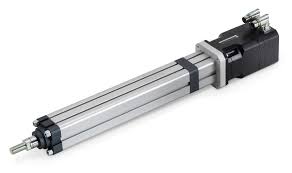Electric actuators play a crucial role in damper control systems, providing precise and efficient regulation of airflow in HVAC (Heating, Ventilation, and Air Conditioning) applications, industrial processes, and other ventilation systems. These devices convert electrical energy into mechanical motion, allowing dampers to open, close, or modulate airflow as required. Understanding how electric actuators work, their types, benefits, and selection criteria is essential for optimizing damper performance and energy efficiency.
How Electric Actuators Work
Electric actuators Damper function by converting electrical signals into mechanical movement, typically using a motor-driven mechanism. This movement can be linear or rotary, depending on the actuator design. The actuator receives a control signal from a building automation system (BAS) or a thermostat, prompting it to adjust the damper position accordingly.
Most electric actuators include key components such as an electric motor, gears, position feedback sensors, and control circuits. Some models incorporate fail-safe features, such as spring return mechanisms or battery backups, to ensure reliable operation in case of power loss.
Types of Electric Actuators for Damper Control
- On/Off Actuators: These actuators operate in a binary fashion, fully opening or closing the damper. They are suitable for simple applications where modulating control is not required.
- Modulating Actuators: These actuators allow precise control of damper position based on proportional control signals (e.g., 0-10V DC or 4-20mA). They enable fine-tuned airflow regulation, improving efficiency and comfort.
- Spring Return Actuators: These actuators include a spring mechanism that returns the damper to a default position when power is lost. They are ideal for safety-critical applications requiring fail-safe operation.
- Non-Spring Return Actuators: These actuators maintain their last position when power is lost. They are typically used in applications where fail-safe operation is not necessary.
- Smart Actuators: Equipped with digital communication protocols such as BACnet or Modbus, these actuators integrate seamlessly with modern BAS, enabling remote monitoring and control.
Benefits of Using Electric Actuators
- Precision Control: Electric actuators offer highly accurate damper positioning, improving airflow regulation and system efficiency.
- Energy Efficiency: Unlike pneumatic actuators that require continuous compressed air, electric actuators consume power only when moving, reducing energy costs.
- Low Maintenance: With fewer moving parts and no reliance on compressed air, electric actuators require minimal maintenance compared to pneumatic counterparts.
- Integration with Automation Systems: Many electric actuators support digital communication, making them ideal for smart buildings and automated HVAC systems.
- Reliability and Longevity: Designed for durability, electric actuators offer consistent performance and a longer operational lifespan.
Selecting the Right Electric Actuator
When choosing an electric actuator for damper control, consider the following factors:
- Torque Requirements: Ensure the actuator provides sufficient torque to move the damper effectively. The required torque depends on damper size, type, and air pressure conditions.
- Control Type: Determine whether an on/off, modulating, or smart actuator is needed based on the application.
- Fail-Safe Needs: Choose between spring return or non-spring return actuators based on system safety requirements.
- Power Supply Compatibility: Verify that the actuator operates with the available voltage (e.g., 24V AC/DC, 120V AC, or 230V AC).
- Environmental Conditions: Consider factors such as temperature, humidity, and exposure to dust or chemicals to ensure the actuator is rated for the application.
Conclusion
Electric actuators are indispensable components in damper control systems, offering efficiency, precision, and reliability. Understanding their working principles, types, benefits, and selection criteria can help ensure optimal system performance. As HVAC and industrial control systems continue to evolve, electric actuators will remain a key technology for improving energy efficiency and indoor air quality.





Comments